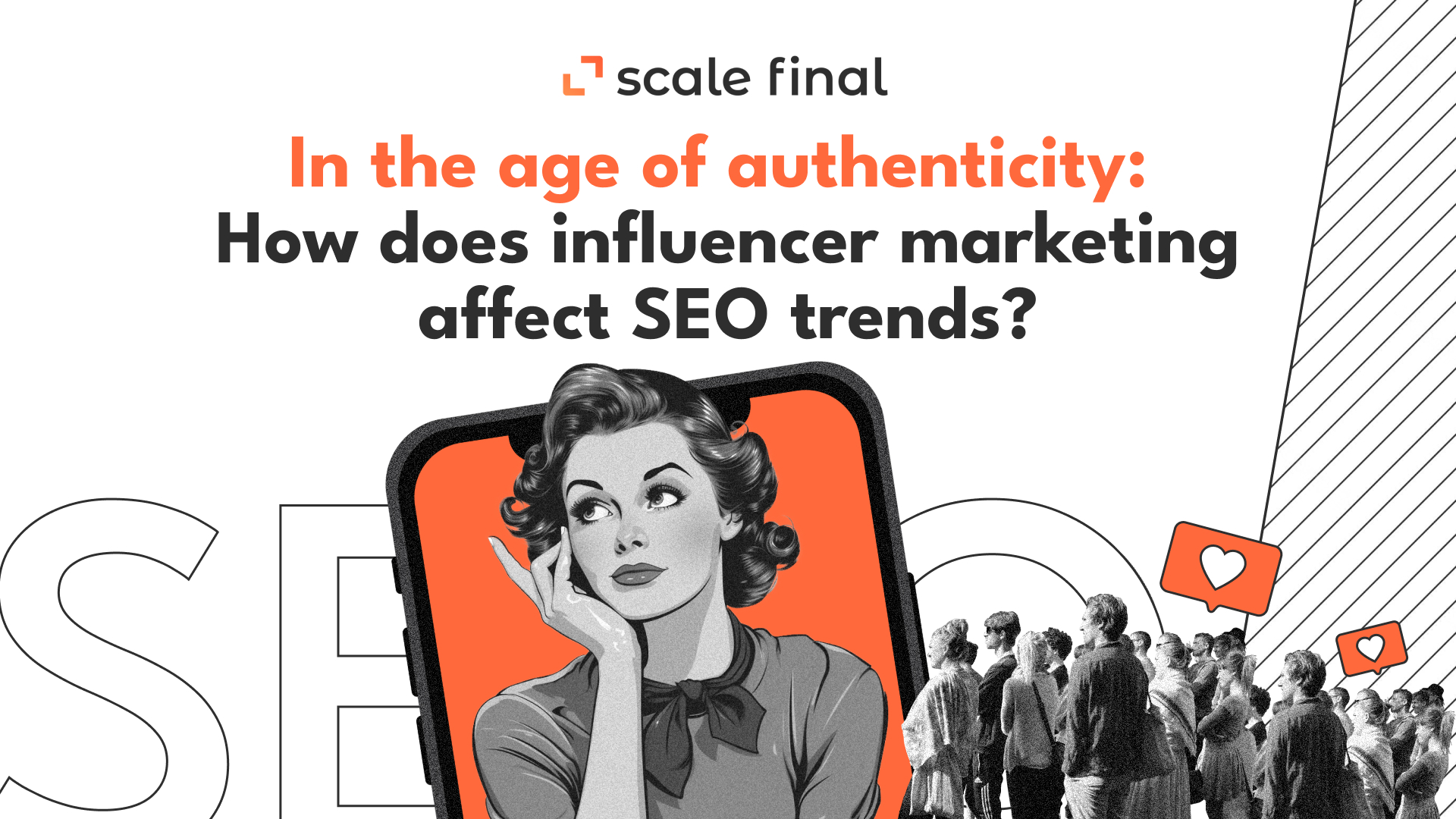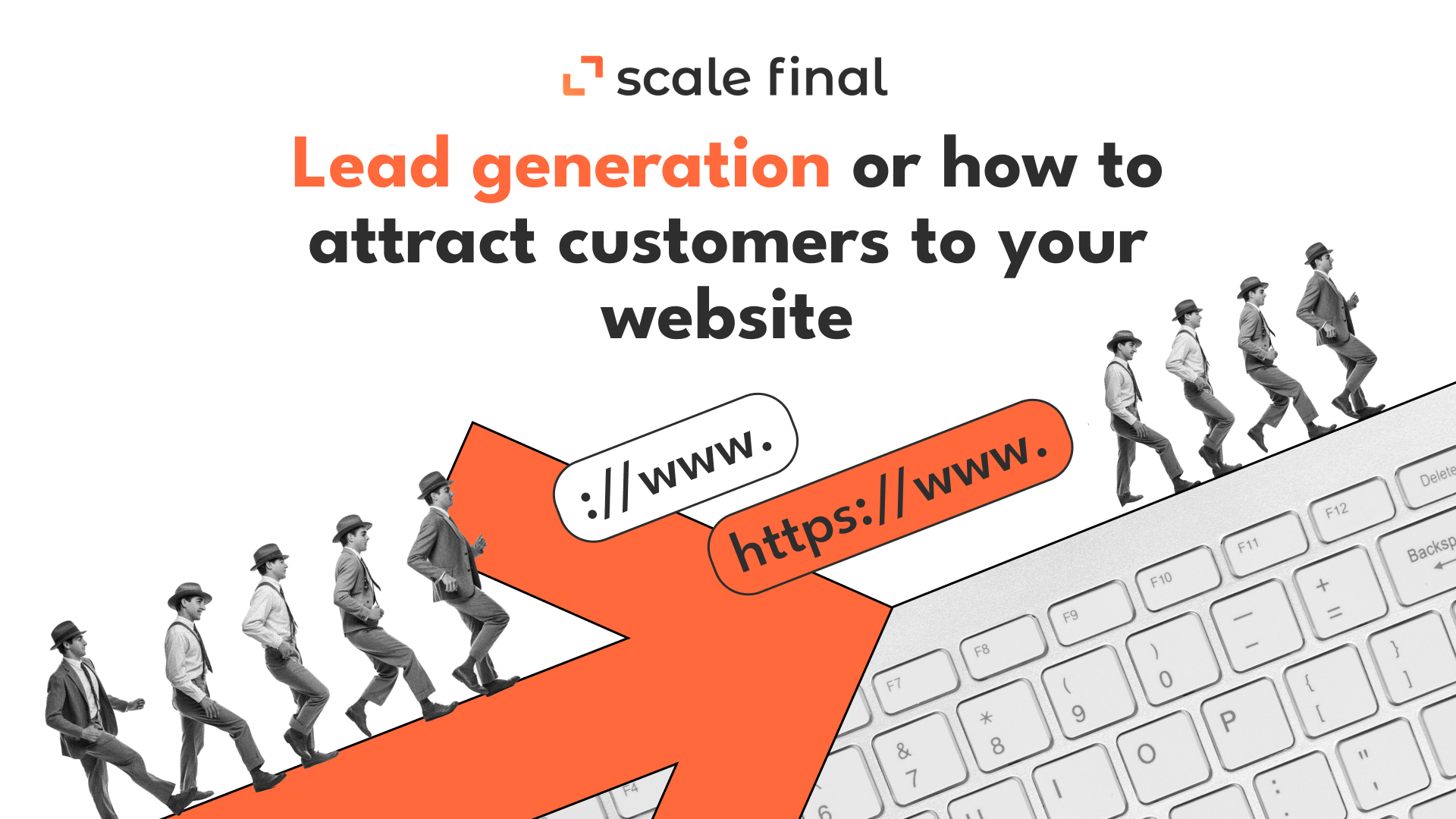Home • Marketing

Pros and cons of AI for copywriting
November 20, 2023Marketing
When ChatGPT first appeared, it seemed to many that copywriting would become completely automated and that machines would replace writers and lead to unemployment. However, that hasn’t happened and it isn’t likely to happen anytime soon. After all, if you rely on AI to write an entire article, the resulting text will be unreadable and require further editing (fortunately, now you can order rewriting from professionals at an adequate price and with quick turnaround times). Does this mean that AI cannot be used in writing texts at all? No, it actually has its own pros. We will tell you what they are and how to use them effectively. Pros Let’s first consider the pros of using AI. There are many, so let’s go through them one by one. Increased productivity Initially, artificial intelligence was created to aid people, not to replace them. And it excels in this role. Let’s explore how AI can increase productivity when writing texts: Creating unique content Analyzing large amounts of data AI can analyze huge amounts of data in a short time, which is physically impossible for humans. At the same time, it is able to collect information from a variety of internet sources (be it news sites or social networks (this info may not be reliable, but more of that later). Once the data is collected, AI analyzes it, quickly looking through it and highlighting the most important information. This helps to better understand what’s really important for the audience or project. However, artificial intelligence lacks emotions, so it cannot truly “understand” the target audience, just like any human. Accordingly, it can only present information if the operator provides a detailed query. Cons Now let’s talk about what enabled humanity to triumph against technology so far. Inaccuracy Artificial intelligence has great potential, but it is also not immune to potential errors and inaccuracies, which can arise due to factors like input data quality, algorithm flaws, and machine learning limitations. Lack of creativity While AI can be trained to perform certain tasks and even to model some aspects of human behavior, it lacks the ability to think creatively. AI works based on the algorithms and data it is given and cannot go beyond these parameters. Lack of emotions and empathy Empathy is what makes us human. And, by extension, something that artificial intelligence can only imitate. AI is not capable of empathy at all. Empathy is being able to understand and share someone’s else feelings, including emotional and cognitive understanding, as well as social and cultural factors. It is very difficult to simulate this, because it is about “feeling” rather than “processing information.” How to use AI correctly for creating content AI has numerous benefits, but they can easily become drawbacks if using this technology incorrectly. Here are ways to avoid such consequences. Read what’s written This advice may sound obvious, but many people ignore it and rely solely on AI. As a result, the text turns out to be not only difficult to read, but also inaccurate. Therefore, it is important to be sure to read what is written as artificial intelligence is not yet perfect. Combine the work of AI and a human Artificial intelligence should be perceived as an assistant for a human, not its full-fledged replacement. It’s often faster and simpler to edit AI-generated text than to start writing from scratch. Break the text into smaller parts Entrusting artificial intelligence to write a lengthy article will lead to a mess and a large sheet of text. As such, it is ideal to break the whole work into smaller tasks and the entire text into subheadings. Of course, they should be proofread and double-checked before publication.

User-Generated Content (UGC) and its impact on your business
September 7, 2023Marketing
Introduction: What is UGC? User-generated content (UGC) is any content – be it videos, photos, reviews, blogs, social media posts, or any other form of content – that is created by unpaid contributors, often your brand’s customers or fans. Then you use it to promote your product. UGC is a win-win: both you and your users get benefits. Your business constantly receives new content that you don’t have to spend time or money to create. Your users feel more empowered and engaged. You, as a representative of a product or service, just need to directly or indirectly motivate your users to create and distribute the content. With user-generated content, the trust of the cold audience grows, because the opinion of other people is more important than the advertisement. People like to engage with other users’ stories. This is something authentic, real and genuine. This kind of content attracts new users much more effectively than perfect, “polished” advertising photos. Difference between UGC and influencer marketing In a previous post about influencer marketing, we sang its praises. But depending on your goals, you might also consider UGC (or a mix of two) because: Why you need UGC UGC is unbiased and genuine. User-generated content helps audiences explore customer experiences, which in turn builds trust. When UGC is used, it increases traffic and the number of unique links, which is an important criteria for website ranking. In other words, your brand’s website will rank better in the search engine when UGC is present. This, in turn, leads to a larger audience. User-generated content can be integrated at any point in the sales funnel: at the awareness, consideration, or decision-making stage. One of the main reasons why user-generated content has such a strong impact on conversion rates is that it is the most trusted and authentic content in the marketing ecosystem. As mentioned earlier, users are attracted to and feel engaged by reviews from real customers, which leads to an increase in conversions. Social media is the center of UGC, where billions of people research, gather and learn about products through user recommendations, customer reviews and visual content. Increased awareness leads to engagement with potential customers, which in turn means engagement with your brand. Engagement is undoubtedly the main goal of an online marketing strategy, as it positively correlates with conversions. Bonus: And that’s not all, because UGC is also cost-effective. Brands don’t have to spend additional resources on creating this content. Instead, they can focus their efforts on curating and promoting this content.Tip: Consider adding UGC to your content marketing strategy. For this, use our guide How to write content that sells. Part 4 How to encourage UGC Conclusion UGC is an organic way for you to connect with your audience, build credibility, and enhance your online presence. Influencer marketing offers unique benefits, but the spontaneity and authenticity of UGC carry their own weight. Brands that can effectively use both strategies will undoubtedly be one step ahead in fostering genuine relationships with their audience.

In the age of authenticity: How does influencer marketing affect SEO trends?
August 28, 2023Marketing
Gone are the days when brands were merely searching for celebrities to use as advertisers; today, everyday creatives are in the spotlight with their passionate and engaged audiences. With a projected valuation of $21.1 billion and the rise of AI influencers, the intertwining of genuine influencer partnerships and innovative SEO strategies is becoming increasingly important. Why are brands partnering with influencers, what unique tools do influencers offer? What trends exist now and are planned for the future – answers to the most critical questions from the marketing agency Scale Final. Let’s get right to it. Influencer marketing in a nutshell Analytics & trends The Influencer Marketing Benchmark Report 2023 shows that the future of influencer marketing is more than bright.The data applies to almost all jurisdictions, with as many as 3,500 marketers surveyed. Some bullet points: And interesting trends: However, you should follow some rules when doing influencer marketing. Despite the advantages mentioned above, influencer marketing is only good if it is honest and authentic. So that you and your fellow influencers to gain mutual benefits and communicate your values to the audience. Influencer marketing guidelines 1. Full disclosure. Influencers must explicitly mention sponsored content so the audience knows it is advertising. 2. Authenticity. Influencers should promote products they truly believe in and that their audience cares about. Advertising for profit can undermine their credibility. 3. Transparency. Brands should be open about their partnerships with influencers and also provide information about rewards. 4. Accountability. Both brands and influencers should be held accountable for the content of their advertising to ensure product safety and the legitimacy of advertising claims.Some of the well-known brands that are successful with influencer marketing include Patagonia, Dove, and Airbnb.So we’ve covered trends and analytics. Ethical questions about dealing with your audience. The next part is about influencer marketing and SEO, i.e. how search engine algorithms react to influencer content and how it affects your brand. SEO and influencer marketing The future of SEO will be closely linked to influencer marketing. More and more search results emphasise personal experiences such as short videos, Perspectives, Knowledge graphs, and Author carousels. There is a strong correlation between social signals and performance on Google, especially in Discover. Although Google has stated that social media is not a ranking factor, the correlation between the two is strong. This is especially true for YouTube, which Google increasingly includes directly in organic search results. Videos with many views on YouTube often take top positions in search. This is even more true for Perspectives. Google‘s addition of the new letter “E” (experience) to the word E-E-A-T was an important clue. The most innovative SEO strategies will involve real experts and contributors, and their online profiles will be the focus of all SEO activities. We can highlight the increasing role of in-house influencers, whose presence on social media will represent the brand. Learn how to build authority via an expert content strategy: How to write content that sells. Part 2 Google will understand even better who people are and what they do. Authenticity will become increasingly important. Conclusion The symbiosis between influencer marketing and SEO has never been more evident. This paradigm shift, backed by extensive analytics, demonstrates authentic content creators’ undeniable influence and potential in shaping online visibility and brand trust. As search engines prioritise authenticity and personal experiences, companies must remain agile and blend the worlds of influencer collaboration and innovative SEO tactics. This is the only way to ensure a meaningful connection with audiences and a stronger online presence.

Uncovering the complexity of B2B lead generation
August 11, 2023Marketing
Lead generation is all about finding the perfect way to turn prospects into loyal customers. But guess what? B2B lead generation sometimes feels like a puzzle that’s missing a few pieces. It takes a special approach. One that overcomes all the challenges and focuses on authenticity and building real connections. But not all specialists and agencies understand this and offer you quick wins or strategies for other types of businesses. In this post, we’ll go over how you should and shouldn’t go about B2B lead generation. How you shouldn’t approach B2B lead generation Very often B2B lead generation agencies offer a service like this: 1. You portray your ideal customer 2. The agency finds LinkedIn users who match the portrait 3. The agency sends them a bunch of intrusive messages. 4. The agency finds those people’s email addresses and bombs them there. These types of agencies won’t spend time on quality content. Nor will they spend time building connections between you and potential clients on social media.This type of work amounts to cold emailing without permission from users. It’s nothing more than multichannel spam. And this approach leads to low conversion rates. But that’s not even the whole problem. What’s the problem with cold outreach in B2B lead generation? Your company’s reputation drops below zero in the minds of those who have received these cold messages. Imagine if every one of you reading this post receives three private messages from us within a week offering to buy our service. And then you get the same message five more times via email. One of you might even buy our service. What about the other 1,000 people? It’s already difficult to run an effective inbound or ABM (account-based marketing) program. Never be seduced by quick wins like this. How do you go about B2B lead generation B2B lead generation is more complicated than the e-commerce cycle, which is: And this approach will also fail: Not only do you have to find the right way to generate leads, you also have to track where they come from. But even tracking software can fail. You’ll learn more about that later in the text. First, it’s Important to understand this: 1. B2B buyers rely on the recommendations of their peers when making a purchase This was true even before COVID, but thanks to COVID this process has accelerated dramatically. Instead of searching Google, “What tools should I buy to create TikToks?”, you’re more likely to go to a community in Slack and ask 13 CMOs. Or you email three people you met at a conference and ask them what they do. To back this up, here are some statistics from Evan Hughes: “Over 75% of website demo requests said they were made aware of the brand by a different source than the attribution software reports. Here’s the breakdown of SRA (self-reported attribution): 𝘏𝘰𝘸 𝘥𝘪𝘥 𝘺𝘰𝘶 𝘩𝘦𝘢𝘳 𝘢𝘣𝘰𝘶𝘵 𝘶𝘴…? 31% Colleagues/friends/word of mouth24% Internet/paid search/Google/Bing18% Community/G2/podcast/event16% Paid Social/LinkedIn/FB11% “Other” or N/A However, attribution software (HubSpot) reports: 82% Direct/Organic11% Paid Search2% Paid Social5% Other\Mix Despite those number, marketers still prefer attribution software over qualitative customer feedback.” This only led to: 2. You must invest in content Almost every SaaS becomes media. Founders are learning from their kids to make videos that take off on TikTok. People are still looking for things, they just have a lot more ways to look. 10 years ago, it was mostly Google. Today, that search can be on Instagram, TikTok, LinkedIn, in the community, in a LinkedIn group, at events, etc. A very typical way: 1. You listened to a podcast with a startup founder. 2. Then you watched his video from the conference. 3. Your former colleague told you how he implemented this software in his new company. 4. You Googled the company and clicked on “contact sales.” The marketing software tagged you as an organic user, but you can’t do anything with that information. This makes attribution a very difficult task. In consumer businesses, at times like this, they turn to “marketing mix modeling.” In B2B, there isn’t enough data for this kind of calculations. This approach doesn’t prioritize the channels that are typically used to generate demand because the attribution software is based on tracked digital touchpoints. This limits the marketing team’s ability to select the tools they can use to attract new customers. On top of that, we’re reaching limits every year on the Internet.A single source of truth for attribution has become a utopia. Using Google Analytics alone is no longer effective. It’s getting harder to track users across the web and iOS apps, and cookie-based strategies are losing their utility. Conclusion B2B lead generation is complex. The key is to build trust, deliver valuable content, and adapt to the changing preferences of your target audience.Avoid the pitfalls of cold outreach and focus on building genuine relationships, leveraging peer recommendations, and creating compelling content. By implementing these strategies and staying agile in tracking and attribution, you can overcome the challenges of B2B lead generation. You would position your brand for sustainable success in a rapidly changing environment.Tip: learn more about leadgen channels in a previous blog post: Lead generation or how to attract customers to your website

Lead generation or how to attract customers to your website
August 4, 2023Marketing
A user who wants to purchase or order a service on your website is called a lead. Both online and offline businesses need leads. In simple words, lead generation is finding potential customers and collecting their contact information for further interactions. Lead generation exists in every niche. Only the methods of acquiring leads differ, influenced by the specifics of your company’s field of activity. Both marketers and sales departments work on this process. The former combine SEO, contextual advertising, targeting and social networks. The latter focus on improving the work of customer support and sales managers. The ultimate goal of lead generation is to sell goods and services and build an active customer base. How to evaluate lead generation? You can evaluate your lead generation by quality and quantity of leads. If the quantity of leads varies from business to business depending on your goals, it is quite easy to assess the quality of leads. These are potential customers who: How do you capture leads on a website? Lead generation on the website benefits the business because if the visitor has left their data, they’re most likely interested in making a purchase. Even if they’re not planning to do it here and now. Another plus is that lead generation on the website requires less investment than buying other types of advertising or attending various conferences and exhibitions. The choice of effective lead generation channels depends on your business’s sales and development goals. Now for the lead generation tools on the website. Feedback form This is the first thing that comes to mind regarding lead generation. But there’s more to it than that. That’s why you must keep the following in mind when working with the feedback form: Follow these essential rules to make your feedback form a valuable and profitable tool. Lead magnet Another effective way to build your customer base is to offer a potential customer a free gift in exchange for a specific action: filling out a feedback form, subscribing to a newsletter, etc. For example, if you sell cosmetics for face and body care, offer potential customers a checklist to help them choose the right cream for their skin type, asking for an email and a phone number. Other options that work are: Your job is to offer the potential customer something of value, not just beg for their contact information. Newsletter The task of a lead magnet is to present a potential customer with a gift on a one-time basis, while a newsletter implies regular communication. And this tool must be used properly. Nowadays, there is an opinion that emails are a thing of the past, and nobody reads the messages sent. However, it is a great way to warm up the customer for an extended time and motivate him for additional orders or at least not let him forget that your company exists. You shouldn’t underestimate the newsletter because quality content will find its readers. Landing page The main goal of a landing page is lead generation and nothing more.A landing page should be sales-oriented, familiarize the visitor with the product or service, include a lead magnet offered in exchange for contact information, and at the same time advertise exclusively to your target audience. Tip: Feedback forms also work on the landing page, so you can combine both lead generation channels. Useful content If you’re told there’s too much content and you shouldn’t post it, don’t listen.In the vastness of the internet, most of the posted articles are of average and low quality, customers easily recognize this and therefore ignore them.Informative and relevant blog content on a website attracts potential customers, increases trust in the brand as a whole and strengthens your status as an expert in the niche. Read our guides on how to write content that sells: Part 1, Part 2, Part 3, Part 4 Note: That’s why it’s important to focus on the quality, usefulness and regularity of the content you publish. As a bonus, you can improve your SEO, climb to the top of search results, and get a steady stream of organic traffic that, if handled properly, will convert into leads in the future. Customer support Customers can’t always find the information they need on the website, so they contact online consultants for help.By writing a question to the chatbot, the user gets quick help, and you get the contact details of a potential customer.Among other things, a chatbot can respond to customers, because consumers are spoiled with fast service at a high level and unwilling to wait even a few minutes. Tip: to dive deeper, check out our B2B lead generation guide: Uncovering the complexity of B2B lead generation

5 signs that a marketing agency is helping your business grow
July 17, 2023Marketing
We begin today with a hot announcement. No, it’s not enough for the marketing agency you’re working with to meet KPIs. Although, of course, that’s important too. What should you look for when seeking an effective partnership with a marketing agency? You can only call a marketing agency great if they share your values. Only then can you call them your partner. You’ll learn why this isn’t too high a claim and what are the signs that an agency is interested in your company’s growth in our new text. Sign 1. Agency comes to you with initiatives You may come to an agency with a specific request: to increase brand awareness, attract new customers, or make a campaign for a new product. You don’t need to know how to achieve those goals. You don’t need to know about trends, new advertising channels, and analytics. An agency, on the other hand, tracks them every day. As a result, it knows in which cases the client can get more than it originally expected. And then there are two options: In the first case, everyone is happy: both the company and the agency make a profit. The second option is more complicated but has more potential: if your company grows faster, the agency’s business also grows. And if you see each other as partners rather than a marketer and a client, you’ll be more motivated to cooperate and look for growth points. Sign 2. You’re informed about problems and are offered solutions Projects inevitably have flaws. Things go differently than planned. And that is normal. What’s not normal is when you only know about problems once its too late – you’re behind schedule or not meeting KPIs. For example, you had a landing page error, a product order error, or an incomprehensible user scenario in the app. And in both cases, they suggest how to solve the problem. Sign 3: Your expectations are adjusted to more realistic ones People come to a marketing agency to spend less on advertising, earn more, and grow faster. But you can’t be 100% sure if your goal is realistic. If your company wants to grow by 230% per month, but the industry norm is a maximum of 30% per quarter, a good agency will tell you it is impossible. They’ll share statistics and their own experience. And by doing so, they’ll help you achieve the maximum results. And if they promise a lot in a short time – it’s a red flag. Ask lots of questions and find out where those promises come from so you don’t end up with stretched deadlines and unmet KPIs. Tip: Let’s take Scale Final as an example. Pay attention to the elements on the website that confirm our expertise: testimonials, case studies, and the About Us page. Sign 4. They share their expertise with ease You don’t just come to the marketing agency to achieve KPIs. You came for the expertise. But agency specialists start talking jargon. And when you don’t understand, they roll their eyes. This is not cool. And yes, we marketers know how to talk differently. If we want to cooperate, we will invest time and effort in explaining our actions. We also are willing to share expertise. Sharing knowledge with another person is always about dialogue. Your requests and concerns can be better understood. A client will work with a marketer because it’s easier and more fun.Tip: If you’re just picking an agency, check out their content marketing and social media. A good example is our PBN Service: We didn’t market it like it is a godsend, but we also created a comprehensive guide to PBN creation and how you can create it yourself: PBN ultimate guide. Sign 5. Agency invests in trust and builds a transparent feedback system In a long-term partnership, it’s crucial to check the clock constantly: Is everyone happy, is the company comfortable with the agency team, do you trust each other? Here are some types of transparent feedback systems: Here’s the final advice: We also have a related article but told from an agency perspective. Whether you’re a client or a marketer, we recommend you look into it: 5 worst tips to lose a client.

5 worst tips to lose a client
April 19, 2023Marketing
The simple truth about our customers is that they expect us to meet their expectations. Those are the things we put on this list. On the surface, these things were actually made to please.
Things like bombarding customers with daily emails and notifications, a clumsy and unclear loyalty system, and constant discounts are things that will surely make them leave us.
We won’t deal with things that are clearly a no-no, like unprofessionalism, lack of support, shaggy products, and overall poor customer service.

Drive traffic to your landing pages like a boss
April 13, 2023Marketing
There’s no point in a landing page if your potential customers do not see it. In Landing Page That Convert: The Winning Formula, we gave you a step-by-step guide on creating such a page. In short: product pitch, clear copy, trustworthy social proofs, and powerful CTAs – all well thought out.
What we missed is how you drive traffic to your website landing pages. That’s what we’re going to talk about today.
After implementing the formula, you need to consider where your target audience is spending time online. Even if you already know your target audience pretty well, you should consider this guide as a help to increase your reach.

5 brands leveraging AI in marketing
April 4, 2023Marketing
These brands use artificial intelligence and machine learning technologies as an integral part of their marketing strategy.

Neuromarketing is gold?
March 21, 2023Marketing
Today we’ll discuss why it’s important to collect data and leverage users’ emotional responses to your product



